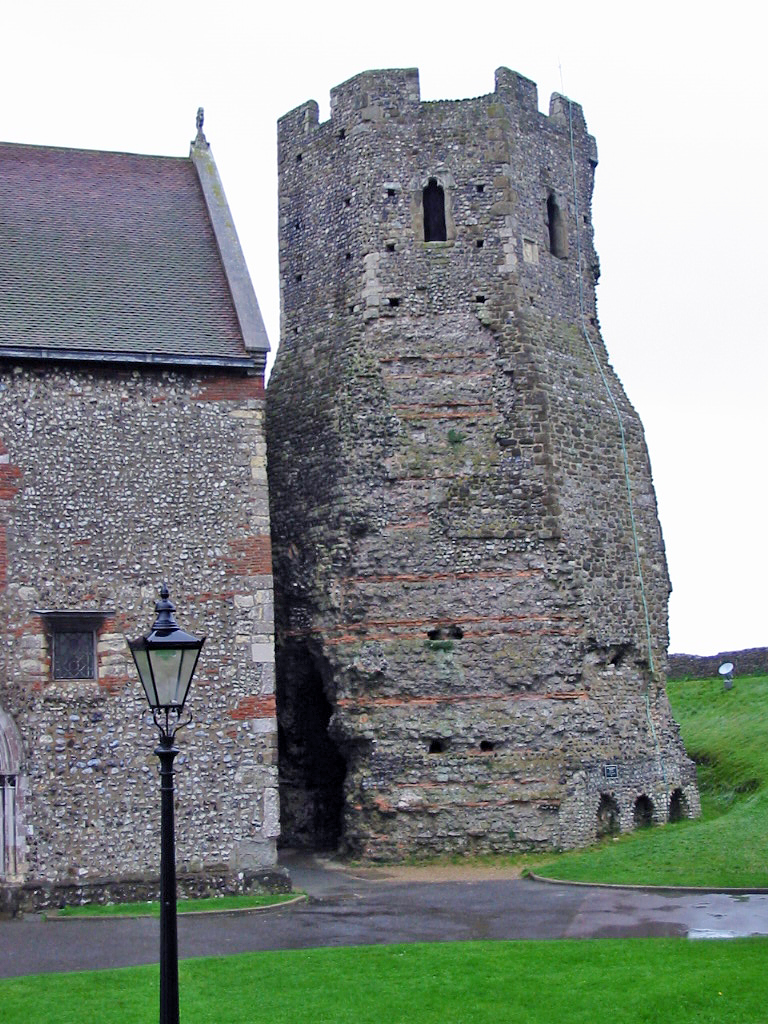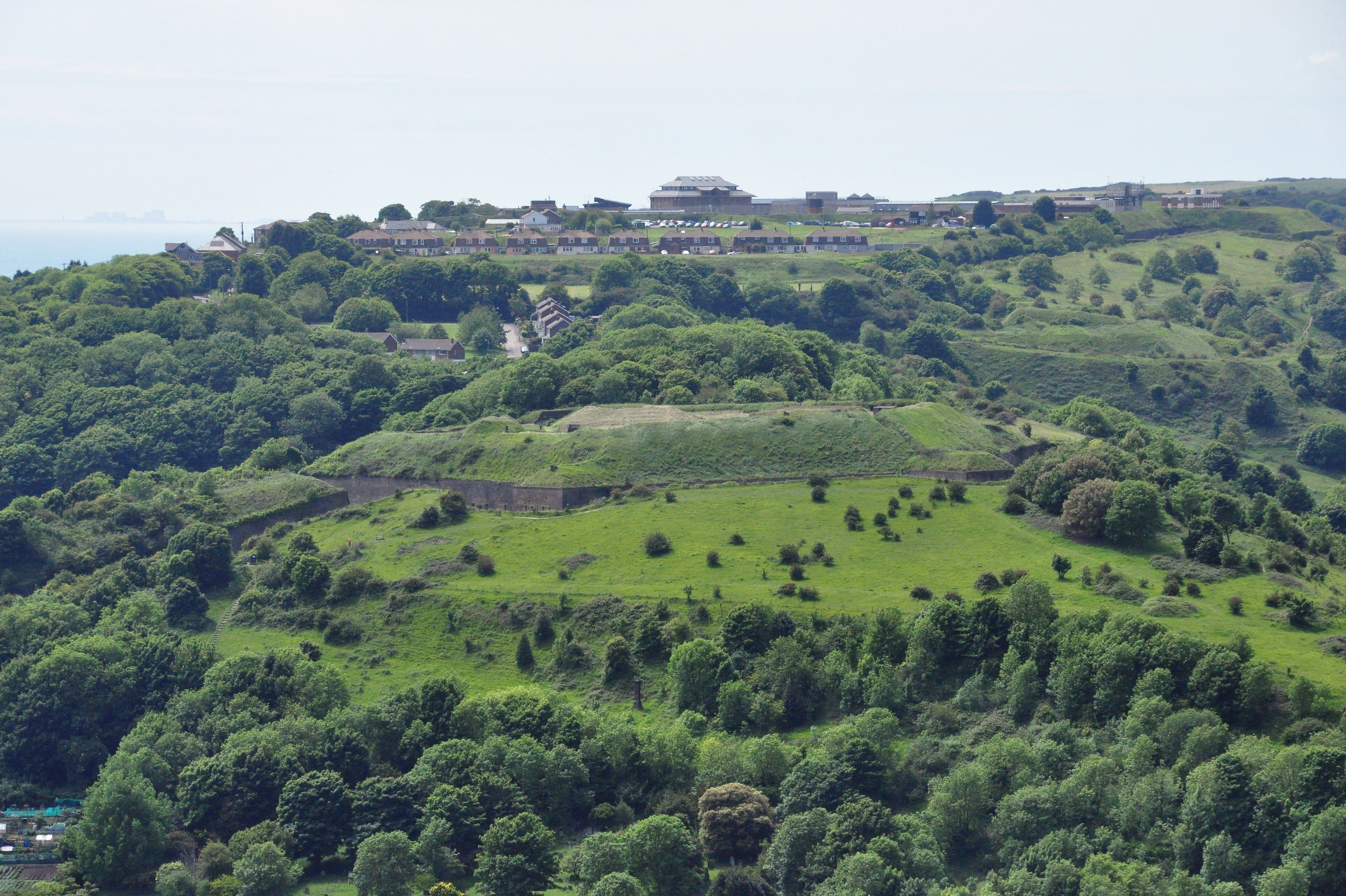|
Palmerston Forts, Dover
{{Use dmy dates, date=April 2022 The Palmerston Forts that defend Dover were built in response to the 1859 Royal Commission dealing with the perceived threat of a French invasion. The forts were intended to defend the Port of Dover, that would provide direct access to an invasion fleet, from capture. Construction was carried out by the Royal Engineers and civilian contractors (under Royal Engineer supervision). In addition to the newly constructed forts, extensive work was carried out on existing fortifications. The fortifications built or upgraded as part of the works were: *Admiralty Pier Turret * Archcliffe Fort *Dover Castle Dover Castle is a medieval castle in Dover, Kent, England and is Grade I listed. It was founded in the 11th century and has been described as the "Key to England" due to its defensive significance throughout history. Some sources say it is th ... complex, including: **East Demi Battery **Hospital Battery **Shotyard Battery **Shoulder of Mutton Battery ... [...More Info...] [...Related Items...] OR: [Wikipedia] [Google] [Baidu] |
Palmerston Forts
The Palmerston Forts are a group of forts and associated structures around the coasts of the United Kingdom and Ireland. The forts were built during the Victorian period on the recommendations of the 1860 Royal Commission on the Defence of the United Kingdom, prompted by concerns about the strength of the French Navy, and strenuous debate in Parliament about whether the cost could be justified. The name comes from their association with Lord Palmerston, who was Prime Minister at the time and promoted the idea. The works were also known as Palmerston's Follies, partly because the first ones which were around Portsmouth, had their main armament facing inland to protect Portsmouth from a land-based attack, and thus (as it appeared to some) facing the wrong way to defend from a French attack. The name also derived from the use of the term "folly" to indicate " a costly ornamental building with no practical value". They were criticized because at the time of their completion, the ... [...More Info...] [...Related Items...] OR: [Wikipedia] [Google] [Baidu] |
Dover
Dover () is a town and major ferry port in Kent, South East England. It faces France across the Strait of Dover, the narrowest part of the English Channel at from Cap Gris Nez in France. It lies south-east of Canterbury and east of Maidstone. The town is the administrative centre of the Dover District and home of the Port of Dover. Archaeological finds have revealed that the area has always been a focus for peoples entering and leaving Britain. The name derives from the River Dour that flows through it. In recent times the town has undergone transformations with a high-speed rail link to London, new retail in town with St James' area opened in 2018, and a revamped promenade and beachfront. This followed in 2019, with a new 500m Pier to the west of the Harbour, and new Marina unveiled as part of a £330m investment in the area. It has also been a point of destination for many illegal migrant crossings during the English channel migrant crisis. The Port of Dover pro ... [...More Info...] [...Related Items...] OR: [Wikipedia] [Google] [Baidu] |
Royal Commission On The Defence Of The United Kingdom
The Royal Commission on the Defence of the United Kingdom was a committee formed in 1859 to enquire into the ability of the United Kingdom to defend itself against an attempted invasion by a foreign power, and to advise the British Government on the remedial action required. The appointment of the Commission had been prompted by public concern about the growing military and naval power of the French Empire and was instigated by the Prime Minister, Henry Temple, 3rd Viscount Palmerston, who came to be closely associated with the project. In the following year, the Commission's report recommended a huge programme of fortification to defend the country's arsenals and naval bases. Many of the recommendations were acted upon; however, the great expense, the length of time taken to complete the various works and their perceived usefulness were all subjects of critical political, press and public debate. Background In the late 1850s, there were serious concerns that France might attem ... [...More Info...] [...Related Items...] OR: [Wikipedia] [Google] [Baidu] |
Royal Engineers
The Corps of Royal Engineers, usually called the Royal Engineers (RE), and commonly known as the ''Sappers'', is a corps of the British Army. It provides military engineering and other technical support to the British Armed Forces and is headed by the Chief Royal Engineer. The Regimental Headquarters and the Royal School of Military Engineering are in Chatham in Kent, England. The corps is divided into several regiments, barracked at various places in the United Kingdom and around the world. History The Royal Engineers trace their origins back to the military engineers brought to England by William the Conqueror, specifically Bishop Gundulf of Rochester Cathedral, and claim over 900 years of unbroken service to the crown. Engineers have always served in the armies of the Crown; however, the origins of the modern corps, along with those of the Royal Artillery, lie in the Board of Ordnance established in the 15th century. In Woolwich in 1716, the Board formed the Royal ... [...More Info...] [...Related Items...] OR: [Wikipedia] [Google] [Baidu] |
Admiralty Pier Turret
The Admiralty Pier Turret, or Dover Turret, is an enclosed armoured turret built in 1882 on the western breakwater of Dover Harbour in southeast England. It contains two Fraser RML 16 inch 80 ton guns, the biggest installed in the United Kingdom. Declared obsolete in 1902, it is currently part of the port and inaccessible, though the guns remain in place. Admiralty Pier Fort The Admiralty Pier Fort, as distinct from the Dover Turret, was commenced in 1872 as a small fort at the extremity of Dover Pier by adding a further extension and widening the pier. In January 1872 Edward Druce, the engineer in charge, reported that the diving bells had commenced preparing the foundations of the fort and in January 1874 Druce reported that the substructure of the fort had been completed at a cost of £19,718 4s 0d. The armament of the Admiralty Pier Fort was to be two 12-inch muzzle-loading rifled guns of 25 tons as these guns were the most powerful available at the time. Dover Turret In 187 ... [...More Info...] [...Related Items...] OR: [Wikipedia] [Google] [Baidu] |
Dover Castle
Dover Castle is a medieval castle in Dover, Kent, England and is Grade I listed. It was founded in the 11th century and has been described as the "Key to England" due to its defensive significance throughout history. Some sources say it is the largest castle in England, a title also claimed by Windsor Castle. History Iron age This site may have been fortified with earthworks in the Iron Age or earlier, before the Romans invaded in AD 43. This is suggested on the basis of the unusual pattern of the earthworks which does not seem to be a perfect fit for the medieval castle. Excavations have provided evidence of Iron Age occupation within the locality of the castle, but it is not certain whether this is associated with the hillfort. Roman era The site also contains one of Dover's two Roman lighthouses (or pharoses), one of only three surviving Roman-era lighthouses in the world, and the tallest and most complete standing Roman structure in England. It is also claimed to be ... [...More Info...] [...Related Items...] OR: [Wikipedia] [Google] [Baidu] |
Fort Burgoyne
Fort Burgoyne, originally known as Castle Hill Fort, was built in the 1860s as one of the Palmerston forts around Dover in southeast England. It was built to a polygonal system with detached eastern and western redoubts, to guard the high ground northeast of the strategic port of Dover, just north of Dover Castle. The fort is named after the 19th century Field Marshal Sir John Fox Burgoyne, Inspector-General of Fortifications and son of the John Burgoyne who fought in the American Revolutionary War. After the First World War Fort Burgoyne was used as a military depot or store for Connaught Barracks. Until recently the central part of the fort was still owned by the Ministry of Defence, forming part of the Connaught Barracks site, which is now being redeveloped for housing. In 2014, Fort Burgoyne and a total of 42 Hectares of land was acquired by the Land Trust. Since acquiring the site the Trust has spent over £2.5 million on priority works (informed by a Coastal Revival F ... [...More Info...] [...Related Items...] OR: [Wikipedia] [Google] [Baidu] |
Langdon Battery
Langdon may refer to: Places Australia * Langdon, Queensland, a neighbourhood in the Mackay Region Canada * Langdon, Alberta, a hamlet United Kingdom * Langdon, Cornwall, a hamlet * Langdon, Kent, a civil parish * Langdon, Pembrokeshire United States * Langdon, Iowa, an unincorporated community * Langdon, Kansas, a city * Langdon, a village which later became part of Cottage Grove, Minnesota * Langdon, New Hampshire, a town * Langdon, North Dakota, a city * Langdon, Washington, D.C., a neighborhood * Langdon, Minnesota, a former settlement * Lake Langdon, Minnesota * Langdon Lake, Oregon As a name * Langdon (surname), various people * Langdon (given name), various people Other uses * Langdon Abbey, West Langdon, Kent, England * Langdon Academy, a co-educational all-through school in the London Borough of Newham, England * Langdon Hall, Auburn University, Auburn, Alabama, United States See also * East Langdon, Kent * West Langdon, Kent * Langdon Bay (Kent) * Lan ... [...More Info...] [...Related Items...] OR: [Wikipedia] [Google] [Baidu] |
Dover Western Heights
The Western Heights of Dover are one of the most impressive fortifications in Britain. They comprise a series of forts, strong points and ditches, designed to protect the country from invasion. They were created in the 18th and 19th centuries to augment the existing defences and protect the key port of Dover from both seaward and landward attack; by the start of the 20th century Dover Western Heights was collectively reputed to be the 'strongest and most elaborate' fortification in the country. The Army finally withdrew from the Heights in 1956–61; they are now a local nature reserve. Introduction First given earthworks in 1779 against the planned invasion that year, the high ground west of Dover, England, now called Dover Western Heights, was properly fortified in 1804 when Lieutenant-Colonel William Twiss was instructed to modernise the existing defences. This was part of a huge programme of fortification in response to Napoleon's planned invasion of the United Kingdom. ... [...More Info...] [...Related Items...] OR: [Wikipedia] [Google] [Baidu] |




